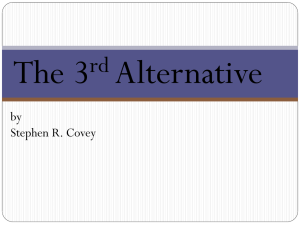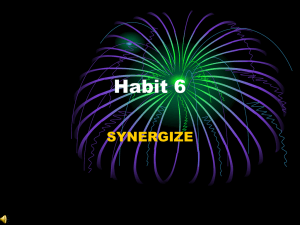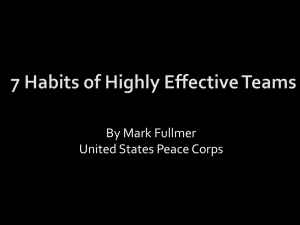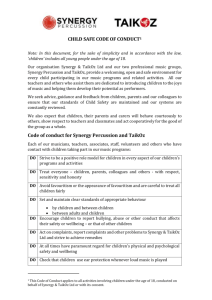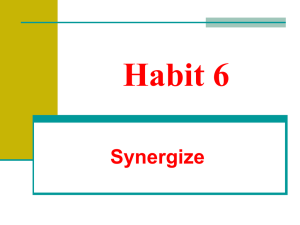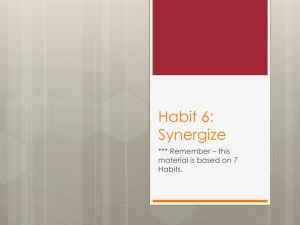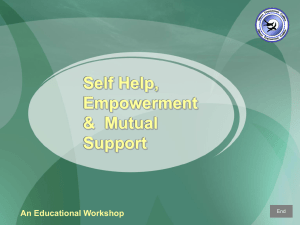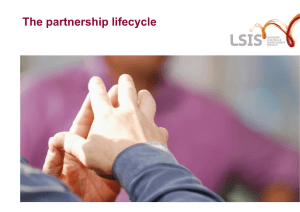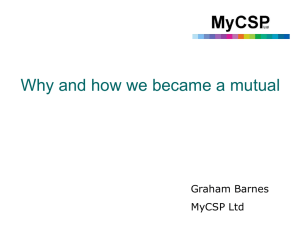Coop Learning Chapter 9
advertisement
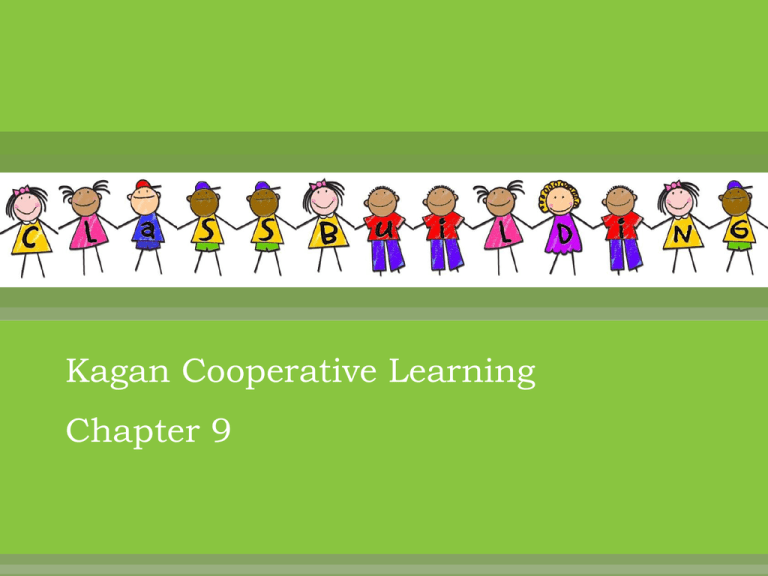
Kagan Cooperative Learning Chapter 9 Five Aims of Classbuilding 1. Getting Acquainted 2. Class Identity Building 3. Mutual Support 4. Valuing Differences 5. Developing Synergy Getting Acquainted Promotes the idea that classmates are real people with real feelings. Breaks down superficial barriers. Reduces cliques The basic needs of feeling important, being liked, and belonging are met. Structures and Activities for Getting Acquainted Find Someone Who Fact-or-Fiction People Hunt Fact Bingo Similarity Groups Round Robin Inside-Outside Circle Class Projects Birthday Calendar Formations Class Bar Graphs Linkages Gesture-Name-Game All About Me Class Line-Ups Mix-Pair-Share Class Identity Building Goal is for students to feel that their class is unique. Promote the feeling of being a proud member of the class. Create distinguishing identity through projects: Class Name Class Logo Class Song or Chant Structures and Activities for Class Identity Building Class Name Class Logo, Banner, Mural Class Door Team Mosaic: Divide door into sections and have each team design a section. Class Song Student Wall Student profile sheet turn into bulletin board. Class Web Site Class Books Classroom Signals Class Mission Statement Mutual Support Mutual support builds trust among the students in the class. Promotes interdependence with in the classroom. Structures and Activities for Mutual Support Hidden Helpers Students receive a secret pal and do something nice for them during the week. No material gifts. Ticket Agents Assign two students to handout tickets for positive behavior. Chain of Friendship Students report positive behavior to the teacher. The teacher gives the student a colored link to add to the class chain. Class Party Brainstorm what makes a good party. Have students sign up to bring items. After party reflect on what would happen if we didn’t each do our part. Mutual Support Continued Mix-Freeze-Group Who Am I? Service Learning Projects Valuing Differences Celebrate Diversity Students need to understand that our classroom values differences. Through our diversity we create a richer classroom environment. Structures and Activities for Valuing Differences Corners Agree-Disagree Line Ups Developing Synergy Synergy in a group allows the group to produce and learn more than if the student is working independently. Synergy must be present to fully engage in the cooperative process. Structures and Activities for Developing Synergy Circle-the Sage Several students are selected as the expert of a topic (the sage). All other students will sit with the sage and learn from the expert. The students take notes then report back to their original group. Formations Geometric Forms Imaginary Machine Structures and Activities for Developing Synergy Class Projects Class Restructuring Class Meetings Function: plan event, solve problems, improve class functioning, and provide mutual support. Structure: Hold regular meetings each week. Agenda: Items must be on agenda prior to meeting. The teacher has ultimate decision power about agenda items. Student Planning: Give students the opportunity to run certain aspects of the meetings. Class Meetings Continued Schedule: Begin with announcements Problem solving Event planning End with a mutual support activity Student Input: During problem solving use a structure that will allow all students to see each others responses. Suggestion/Appreciation Box: Gives each student an opportunity to have input. Share during the class meeting. Setting a Positive Class Tone Activities that enhance the class climate: Arts/Crafts Board Games Class Goals Humor/Jokes Parties Silly Sports and Goofy Games Student Ownership: Student Bulletin Boards Student Jobs Student Government Student Committees Reward/Celebrations Choice of Centers/Activities Student Evaluations “The two approaches described in this chapter are different. But the outcome for both is the same: creating a cooperative, caring community of learners where everyone wants to be and learn.” ~ Kagan Cooperative Learning
